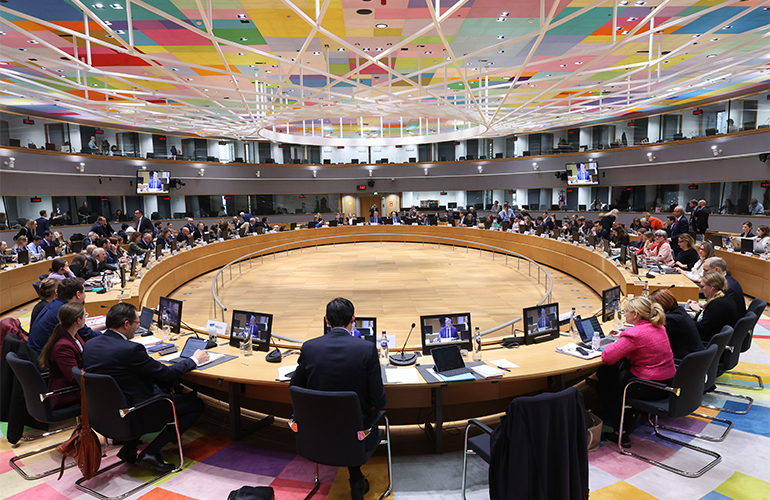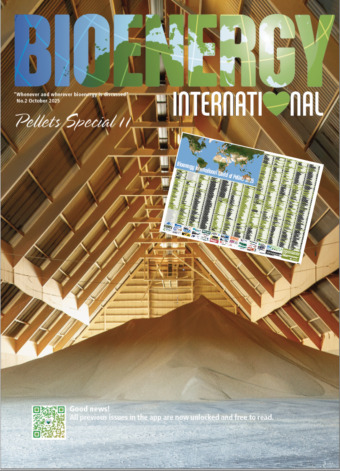The Council of the European Union has reached an agreement on amending the European Climate Law (ECL), introducing a binding intermediate climate target for 2040 of a 90 percent reduction in net greenhouse gas (GHG) emissions compared to 1990 levels. This new target, the Council says, is "a crucial step towards the EU’s long-term goal of achieving climate neutrality by 2050."
First adopted in 2021, the European Climate Law provides the legal foundation for the EU’s long-term climate policies, in line with the Paris Agreement.
It sets a binding economy-wide climate neutrality target by 2050 and a 2030 objective of reducing net emissions by at least 55 percent. It also provides for the establishment of an intermediate climate target for 2040.
After publishing the communication ‘Europe’s 2040 climate target’ in February 2024, the European Commission put forward a proposal on July 2, 2025, to amend the European Climate Law to set a 2040 target.

The Council of the European Union (European Council) has reached an agreement on amending the European Climate Law, introducing a binding intermediate climate target for 2040 of a 90 percent reduction in net greenhouse gas (GHG) emissions compared to 1990 levels.
The amendment also sets out some areas of flexibility and key elements for the 2040 target and for the post-2030 climate framework.
These will steer the Commission’s future legislative proposals to enable member states to hit the 2040 target while supporting European industry and citizens throughout the transition.
The agreed text sets the Council’s position for the upcoming negotiations ‘trilogues’ with the European Parliament that will shape the final text of the legislation.
Today, we have adopted a 90 percent climate target for 2040 with broad support from the member states. The target is rooted in science, and at the same time, it combines our competitiveness and security. This is important for the future of Europe – and it shows that even in challenging times, we can stand united. The target sets a clear direction years ahead for our policies, industries, and investments. With this in hand, we are ready to build a stronger, more competitive and secure EU, said Lars Aagaard, Denmark’s Minister for Climate, Energy and Utilities.
Main changes agreed by the Council
The Council has maintained the binding 90 percent reduction of net GHG emissions by 2040 proposed by the European Commission.
However, it has made some adjustments to reflect concerns about the EU’s competitiveness, the need for a just and socially balanced transition, uncertainty related to natural removals, and the diverse national circumstances across member states.
These changes were also informed by the strategic guidance provided by EU leaders in the European Council conclusions adopted on October 23, 2025.
Scope for flexibility for Member States
The Commission’s proposal included three flexibility options to be appropriately reflected in future Commission legislative proposals for achieving the 2040 target.
The Council further clarified these areas of flexibility, which include:
- The possibility to use high-quality international carbon credits to make an ‘adequate contribution’ towards the 2040 target, quantified as up to 5% of 1990 EU net emissions, from 2036 onwards, including a pilot period for the period 2031-2035
- A role for domestic permanent carbon removals under the EU Emissions Trading System (ETS) to compensate for residual hard-to-abate emissions
enhanced flexibility within and across sectors and instruments to support the attainment of targets in simple and cost-effective ways, allowing member states to address shortfalls in one sector without compromising overall progress
Elements for the post-2030 framework
The amendment to the European Climate Law proposed by the Commission also establishes a series of principles and conditions that must be taken into account in developing the post-2030 policy framework to enable Member States to achieve the 2040 target and to ensure a fair, cost-effective, and socially balanced transition that drives investment.
While the Council’s position maintains many of the elements included in the Commission’s proposal, it further develops them, including:
- placing a greater focus on strengthening the competitiveness of the EU’s economy and industry, as well as on simplification and reduction of administrative burden
- clearly emphasising the need for a just transition and taking into account different national circumstances
- fostering innovation and the deployment of safe, scalable technologies across all sectors in a technologically neutral manner, while ensuring that energy efficiency remains a central principle
- enhancing support for energy security, focusing on renewable energy solutions, energy affordability, and grid modernisation to secure the EU’s energy supply
- supporting investment and innovation, through both public and private sector funding, and ensuring access to innovative technologies across member states
- addressing the realistic contribution of carbon removals to overall emission reductions, while accounting for the uncertainty associated with them
focusing on the long-term protection and enhancement of natural carbon sinks and biodiversity, addressing the impacts of climate change and natural disturbances on land use and forestry
Review of the target
The Council’s position also introduces a biennial assessment to track progress towards intermediate targets based on the latest scientific evidence, technological advances, and the EU’s global competitiveness.
Member States further elaborated and strengthened the review clause of the existing European Climate Law.
Among other things, the review will cover the status of net removals at the EU level in relation to what would be required to achieve the 2040 target and the evolving challenges to – and opportunities to improve – EU industries’ global competitiveness.
The review will also take into account the evolution of energy prices and their impact on industries and households.
Based on the findings of the review and, where appropriate, the Commission will have to propose a revision of the Climate Law.
This may include adjusting the 2040 target or other additional measures to strengthen the enabling framework, namely to secure the EU’s competitiveness, prosperity, and social cohesion.
ETS2 postponement
The Council also introduced a provision to postpone the entry into application of the EU Emissions Trading System (ETS) for buildings and road transport (ETS2) by one year, from 2027 to 2028.



